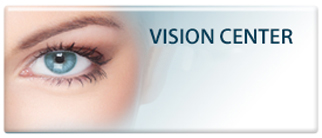Dry eyes aren’t just annoying—they can reduce your productivity and slow you down during daily activities. Nearly half of Americans suffer from dry eyes regularly, making it a very common symptom amongst our Southaven patients. Dry eye syndrome, also called keratoconjunctivitis sicca, is caused by insufficient lubrication and moisture on the eyes’ surfaces.
More than 60% of women report suffering from dry eyes, while only 44% of men are affected by the symptom.
Since dry eyes are a symptom rather than a condition, their cause is usually important to identify in order to find an effective solution. Dry eye syndrome can result from the natural aging process, allergies, contact lenses, computer vision syndrome, excess or lacking vitamins, certain medications, laser eye surgery, some diseases and illnesses, menopause and environmental factors such as pollution, wind, dust and low humidity.
Tear Production and Dry Eye Syndrome
Tears are an important component in overall eye health and clear vision. They work to keep your eyes moist, clean and free from infection. Tears aren’t just drops of water—they’re complex droplets that contain proteins, oil, mucus, antibodies, electrolytes and vitamins. They have three distinct layers: the inner mucous layer, the middle watery layer and the outer oily layer.
Tears are constantly being produced by glands in your eye and spread across its surface through the process of blinking. Excess tears are collected by your eyes’ drainage ducts, which are located in the inner corners of your eyelids. Excess tears drain out through a section of your nasal cavity.
Dry eye syndrome occurs due to one of two problems: either your eyes don’t produce enough tears, or they produce tears that aren’t good quality. When your eyes don’t produce enough tears, the tears evaporate off the surface of the eyes. This is called evaporative dry eye, which is the number one cause of dry eye syndrome amongst our patients in the Mid-South.
Dry Eye Syndrome Symptoms and Treatment
Many patients with dry eyes suffer day in and day out without visiting us for a diagnosis or treatment plan. Dry eye syndrome can manifest itself in many different symptoms, most of which can be easily controlled with basic treatment. Some common symptoms of dry eye syndrome are:
- Pain, redness, stinging or burning
- A sandy or gritty feeling like something is in the eye
- Mucous-like, stringy discharge
- Excess tears followed by bouts of dry eye
- Blurry vision
- Heavy eyelids
- Light sensitivity
- Eye fatigue
- Slowed reading on typed pages or computer screens
Common treatments for dry eye syndrome include:
- Artificial tears. Different drops and ointments work for different people. Talk with us about which over-the-counter options are recommended for your specific condition and needs.
- Punctal occlusion. In more severe cases of dry eye syndrome, we may recommend blocking the ducts that drain tears from your eyes. There are temporary plugs that can be removed anytime. There are also permanent plugs and surgical options to block these ducts.
- Medications and devices. You may need to turn to prescription eye drops or medical devices to resolve your dry eye problems. Lipiflow is a medical device that unclogs blocked tear glands. Restasis is a prescription eye drop that treats chronic dry eye syndrome. There are also other prescription steroid eye drops that may be right for your needs.
- Vitamins and supplements. Fish oil and omega-3s are great for tear production. In mild cases of dry eye, taking these and other vitamin supplements can result in a natural cure for dry eyes.


